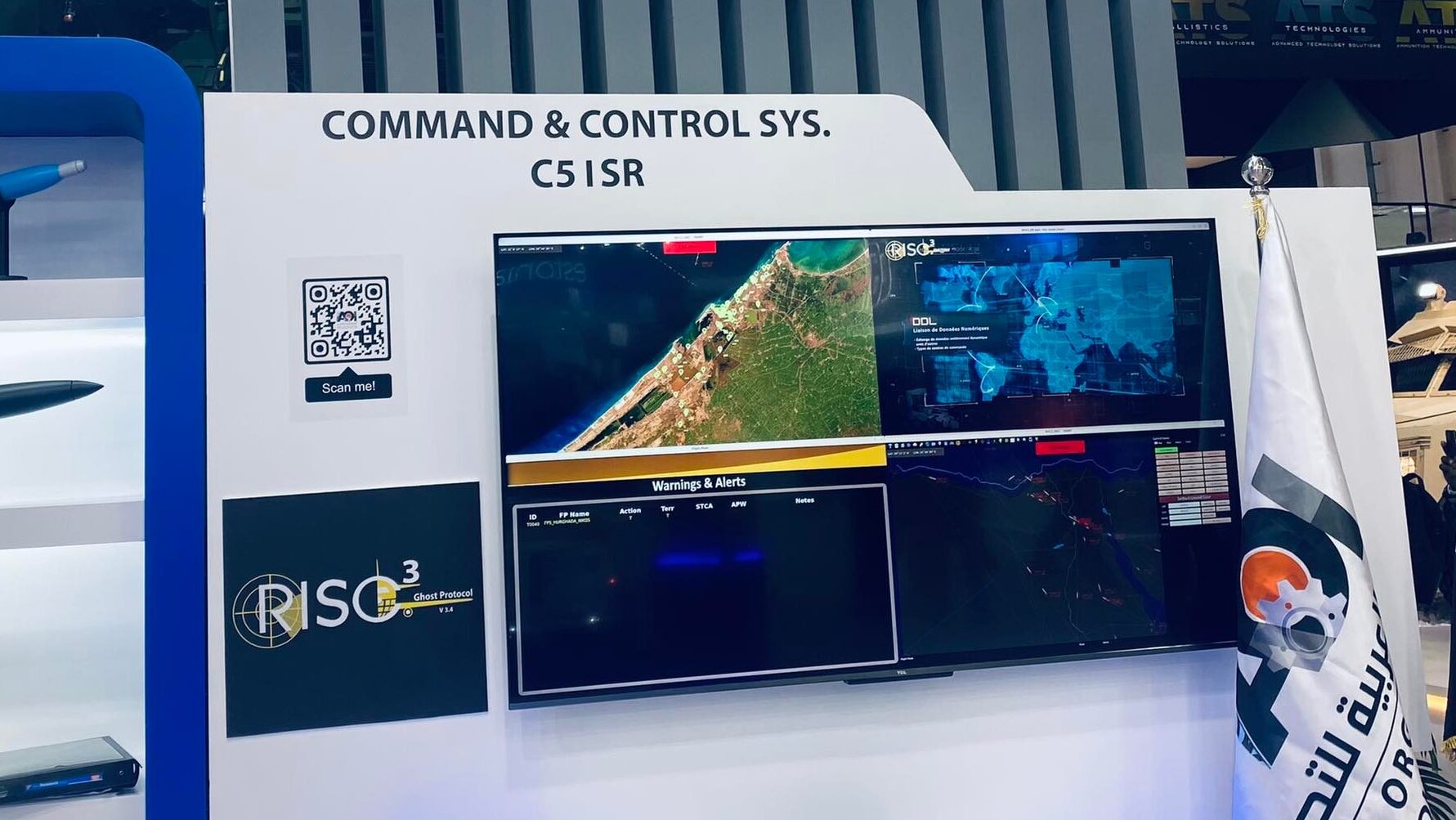
At IDEX 2023, an Egytpian firm debuts what it says is a C5ISR platform that can talk to both eastern and western systems. (Agnes Helou / Breaking Defense)
IDEX 2023 — At an international defense expo in Abu Dhabi, an Egyptian firm debuted a locally made C5ISR system that it says can interoperate with both western and easter defense systems – a critical capability for an Egyptian military stocked with platforms from around the world.
The firm, ACME SAICO, Integrated Engineering Systems, advertised the C5ISR (command, control, communications, computer, cyber, intelligence surveillance and reconnaissance) system for the first time internationally at the AOI (Arab Organization for Industrialization) stand just next to the Egyptian Ministry of Military Production here at IDEX 2023.
“C5ISR can deal with hybrid defense systems from different countries and following different protocols,” the head of the company’s Electronic Industries Division, Ziad Badawi, told Breaking Defense.
Since the 1970s, Cairo has been struggling with coordinating the operations of defense systems from different origins, whether it’s aircraft, air defense systems, naval systems or others.
“Egypt operates air defense radars [of] US, Chinese, Ukrainian, Russian and British origins, so we have been trying to collect the data from these sources in one system for operational efficiency,” Badawi said.
Likewise, defense researcher Arda Mevlütoğlu highlighted Egypt’s air force inventory, which includes French-made Rafale and Mirage fighter jets and American F-16 Block 52 fighters, AH-64D Apache Longbow helicopters, and early warning E-2C Hawkeye planes. It also operates Eastern-origin aircraft including MiG-29M fighter jets, Ka-52 Alligator armed reconnaissance helicopters and Mi-24 combat multirole helicopters.
Badawi said that a smaller version of the sensor integration system was developed in 2002, but the one presented at this year’s show has different versions that more fully realizes a unified platform without special purpose components and operates mostly independently.
“We build our own cybersecurity system hardware base that doesn’t need updates from the internet. The system is a closed cloud customer that the operator can control without the firm’s technician’s intervention. The firm only provides technology transfer for the integration parts, and the operator makes the integration,” he said.
In 2018, the Egyptian firm launched the RISC2 (Radar Integration and Surveillance Command Center) version of the system, which was upgraded to RISC 3 so it could perform combined missions with radars, missiles, aircraft, land forces, counter terrorism, Badawi said.
ACME SAICO has developed RISC3 FOR aircraft operations, and other versions called CTC2 (Counter Terrorism Command Center) for land vehicles operations, and NAVC3 (Navy Combined command Center) for naval vessels operations.
“The system is operational and certified with Egyptian armed forces, it was integrated on all operational aircraft with the air force and will be in the aircraft to be received by them,” Badawi said.
On the land forces side, the northern African country is in the process of integrating the systems on land vehicles up to MRAP vehicles.
Badawi didn’t give too many details on how exactly the integration tech works, but told Breaking Defense, “We support total physical isolation of the data link layers.”
Mevlütoğlu, the Middle East defense expert, said there’s limited public information as well, but he understood the tech employs “interface layers.”
“An interface layer is basically a separate hardware and software bundle that acts like an interpreter,” he explained. “For example, if you want to share information between a Rafale and a MiG-29, which use different types and formats of data, you need an interface layer, which receives data from both aircraft, translates them into each other’s ‘language’ and sends to the recipient. Needless to say, this process needs to be executed in real time.”
That may be a tall order, but Mevlütoğlu said if it works as advertised, there would be no shortage of customers in the Middle East and North Africa whose militaries similarly operate a hodgepodge of systems. It could also, he said, boost the prospects for increased purchasing of Russian and Chinese aircraft, as nations wouldn’t be stuck with Western systems just based on previous purchases.





















